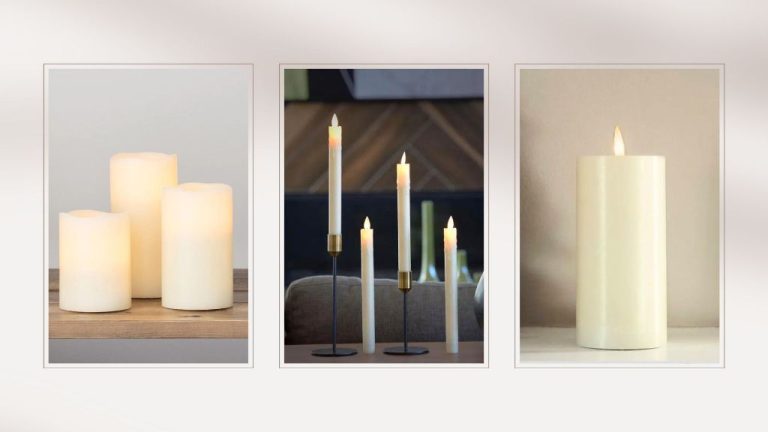What Glitter Is Safe For Candles?
Glitter is a popular decorative material made from tiny, sparkling particles that reflect light. It comes in a variety of colors and shapes and can add a festive accent to candles and other crafts. However, not all glitter is created equal when it comes to safety.
Traditional glitter is made from plastic, which can be harmful to the environment and pose safety risks. Plastic glitter contains microplastics that can contaminate water supplies and harm wildlife when washed down drains. Small plastic particles may also be accidentally inhaled or ingested.
Therefore, it’s important to choose an eco-friendly, non-plastic glitter if you want to safely decorate candles or other items. The key is finding glitters made from alternative materials like cellulose, minerals, seaweed, or eucalyptus plant seeds. These natural options provide the same sparkle without the risks.
This article will explore the types of glitter and provide recommendations for glitters that are safe to use on candles and in other crafts. We’ll also cover precautions for wicks and other aspects of candlemaking safety. Read on to learn how to get a gorgeous glitter look without compromising health or the environment.
Types of Glitter
Glitter comes in a variety of different types, including:
Plastic Glitter
Plastic glitter is made from metallized polyethylene terephthalate (PET) plastic. It’s the most common and affordable type of glitter. However, plastic glitter is not biodegradable and can be harmful to the environment.
Mineral or Mica-Based Glitter
Mineral glitter, also known as mica glitter, is made from natural mica flakes coated with minerals for color. Mica is a mineral that can be sustainably sourced. Mineral glitter is more environmentally friendly than plastic glitter.
Biodegradable Glitter
Biodegradable glitter is made from plant cellulose, a renewable resource. It breaks down naturally in soil, water or compost within 6-12 months. Biodegradable glitter is a good option for eco-conscious crafters.
Understanding the different glitter types available can help guide your glitter selection for candles or other crafts in an informed way.
Dangers of Plastic Glitter
Glitter made from plastic, such as PET or mylar, poses significant environmental dangers and should be avoided in candles. Plastic glitter is not biodegradable, meaning it does not break down naturally. When plastic glitter ends up in waterways or the ocean, it contributes to microplastics pollution.
Microplastics are very small pieces of plastic less than 5mm in size. They result from the breakdown of larger plastic items. Glitter is already tiny pieces of plastic, so it can immediately enter waterways when washed down drains and travel great distances in rivers and oceans.
Researchers have detected high concentrations of microplastics in aquatic ecosystems around the world. These tiny plastic particles are ingested by all manner of marine life, from zooplankton to fish, shellfish, and corals. The impacts of microplastics ingestion on marine organisms are still being studied, but may include digestive blockages, growth inhibition, reproductive issues, and bioaccumulation of toxins.
When plastic glitter ends up in a candle, it will eventually burn, releasing fumes and residues that can be inhaled or settle on surfaces. PET glitter can release antimony trioxide, a known carcinogen, when burned. Mylar-based glitter can produce hydrogen cyanide gas. Clearly, plastic glitter poses risks both when it enters the environment unburned and when it is burned in a candle.
Safer Glitter Options
When searching for a safer glitter alternative, look for options made from mineral, biodegradable or eco-friendly materials. Here are some good options to consider:
Mica powder – Finely ground sheets of mica that create a shimmering effect. Mica is a mineral so it’s non-toxic and environmentally friendly.
Mineral based glitters – These are usually made from minerals like mica, calcite, and gypsum. Avoid any with artificial dyes. Opt for a brand that uses natural mineral pigments.
Cellulose – Glitters made from plant materials like eucalyptus trees or sugar cane. Since they’re plant-based, these glitters are biodegradable.
Biodegradable acrylic – Some companies make biodegradable acrylic glitter from a modified corn starch polymer. These break down faster than regular acrylic glitters.
Eco-glitter – Usually made from epoxy resin derived from plant materials. Check that it’s certified biodegradable.
Tips for Using Glitter
When adding glitter to candles, it’s important to follow some best practices for application and usage to get the best results. Here are some useful tips:
Apply in thin layers – Only use a small amount of glitter at a time. Adding too much at once can clog the wax and prevent even distribution when the candle burns. Build up layers for more glittery effects.
Mix well – After adding glitter to melted wax, stir thoroughly to evenly distribute throughout before pouring into containers or molds. This helps prevent clumping.
Consider glitter size – Larger glitter pieces will sink faster than fine glitter when poured. Use fine glitter for best suspension in wax.
Pour at proper temperature – Allow wax to cool slightly before adding glitter, around 150-165°F. Pour into containers at 130-140°F for best results.
Prevent settling – Allow candles to fully cool and harden before moving or burning to prevent glitter from settling to the bottom.
Use caution when burning – Always keep a close eye on glitter candles when lit. The sparkle effect looks lovely but can also create splatters.
Recommended Safe Glitters
When selecting glitter for candles, opt for trusted eco-friendly brands that use non-plastic materials. Here are some recommended safe glitter options:
Most Eco Glitter – Offers biodegradable glitter made from eucalyptus cellulose with no plastic. Safe for candles and the environment.
Eco Stardust – Biodegradable glitter made from plant cellulose, compliant with EU regulations. Available in various colors and sizes.
Eco Angel – Natural mica-based cosmetic grade glitter made from minerals, free of plastic and synthetic dyes. Suitable for candles.
Glitterex – Provides biodegradable compostable glitter made from eucalyptus wood pulp and natural dyes. Non-plastic and non-toxic.
Bioglitz – Offers plastic-free biodegradable glitter made from FSC certified wood pulp and minerals. Candle-safe and ethically sourced.
Avoid These Unsafe Glitters
When selecting glitter, it’s important to avoid certain types that can be unsafe for candle making. Here are some glitter products to avoid:
-
Craft glitters – These are usually plastic-based and can emit toxic fumes when burned.
-
Glitter flakes – Flakes tend to fly around when the candle is burned, which is a fire hazard.
-
Latex glitter – Can produce airborne allergens and fumes when heated.
-
Glitter with adhesives – The glue can produce toxic fumes and soot.
-
Ultra-fine glitter – Very fine glitters can ignite more easily and heighten fire risks.
-
Cheap party glitters – Low quality glitter made for decor is likely plastic-based.
-
Non-candle making glitter – Unless specified as candle-safe, avoid generic glitters.
-
Glitter in craft kits – Kits may contain plastic glitter unsafe for candles.
Checking labels and descriptions carefully before purchase is key. When in doubt, avoid glitter products that don’t explicitly state “candle making safe.”
Candle Wick Precautions
When using glitter in candles, it’s important to take some precautions with the wick to prevent issues:
Trim the wick – Always trim the wick to 1⁄4” before lighting to prevent emitting excess smoke. This also helps the candle burn slower and more evenly.
Use the right wick size – Match the wick size to the diameter of the candle. Too small of a wick can drown in wax or glitter; too large can cause issues like tunneling.
Prevent wick clogging – Glitter particles can clog the wick as the candle burns. Use an appropriate amount of fine glitter and allow it to fully settle before burning to reduce clogging.
Paying attention to the wick when using glitter candles prevents problems like poor scent throw, tunneling, and excess smoke. Follow these tips and light the wick safely.
Other Decorative Options
While glitter catches the eye, there are many other safer ways to decorate candles. Dried flowers and herbs add a subtle natural elegance. Consider lavender, rose petals, chamomile, citrus slices, or eucalyptus. They provide a delicate fragrance while burning. For texture, press edible flower petals like roses, pansies, or violets into melted wax. Coffee beans, spices like cinnamon sticks or whole nutmeg, and seeds such as poppy, sesame, or fennel add visual flair. For color, infuse wax with natural dyes from turmeric, blueberries, or beets. Tea leaves swirled into wax create an earthy pattern. Or impress designs into the surface like pinecones or seashells. With abundant options from nature, it’s easy to craft gorgeous glitter-free candles.
Conclusion: Summary on Glitter Safety for Candles
When choosing glitter for candles, pick options that are non-plastic and specifically made for candle use. Some safe choices include mica powder, luster dust, cosmetic grade glitters, and candle-safe glitters from reputable manufacturers. Read labels carefully and do a small test burn before using any new glitter product in candles to ensure it’s safe.
Avoid plastic glitters as they can melt, become airborne, and release toxic fumes. Also be mindful of wick issues that could arise from glitter getting on the wick. With some care taken to choose the right glitter and handle it properly, you can safely add beautiful, sparkly accents to your handmade candles. The safest approach is to use high quality products designed for candle making and do your own safety tests. This allows you to decorate candles with glitter while avoiding potential hazards to yourself or others.




